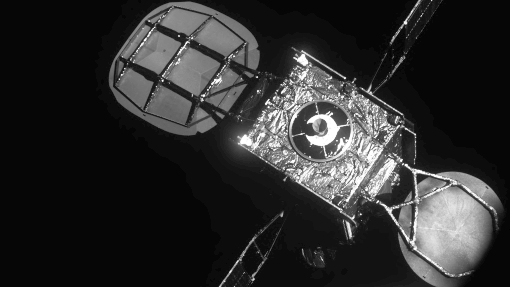Northrop Grumman's Mission Extension Vehicle-1 (MEV-1) docked successfully with Intelsat’s-901 communications satellite in orbit on Tuesday, the first time two commercial satellites have ever docked in orbit.
What are these two satellites: The 19-year-old Intelsat-901 had recently been moved into a “graveyard orbit” 186 miles higher than geostationary orbit, away from active satellites. This wasn’t because Intelsat-901 wasn’t working properly anymore, but because it was critically low on fuel, which meant Intelsat would soon lose the ability to control it.
MEV-1 is part of Northrop Grumman’s new satellite servicing program. It’s designed to dock with other satellites running low on fuel, and use its own thrusters and fuel to take over navigation and maneuvering processes, extending mission lifespans for at least a few years.
A boon for satellite servicing: Many companies are pursuing different satellite servicing approaches to repair broken assets, extend satellite lifespans, and remove objects from orbits where they could threaten to crash into active satellites. MEVs are usually designed to service satellites in geostationary orbit for 15 years, but other companies like Astroscale are pursuing orbital debris removal in low-Earth orbit, using magnetic plates to latch onto other objects and drag them down into Earth’s atmosphere for incineration.
Next steps: In March, MEV-1 will use its thrusters to move Intelsat-901 out of graveyard orbit and back into geostationary orbit, where the latter can resume normal operations. The, after five years, MEV-1 will return Intelsat 901 to the graveyard, and potentially rendezvous with another satellite in need of a life extension. Northrop Grumman will launch MEV-2 later this year to service another Intelsat satellite. The company is also working on a fleet of mission-extension “pods” that could provide smaller satellite servicing needs to assets in orbit.

